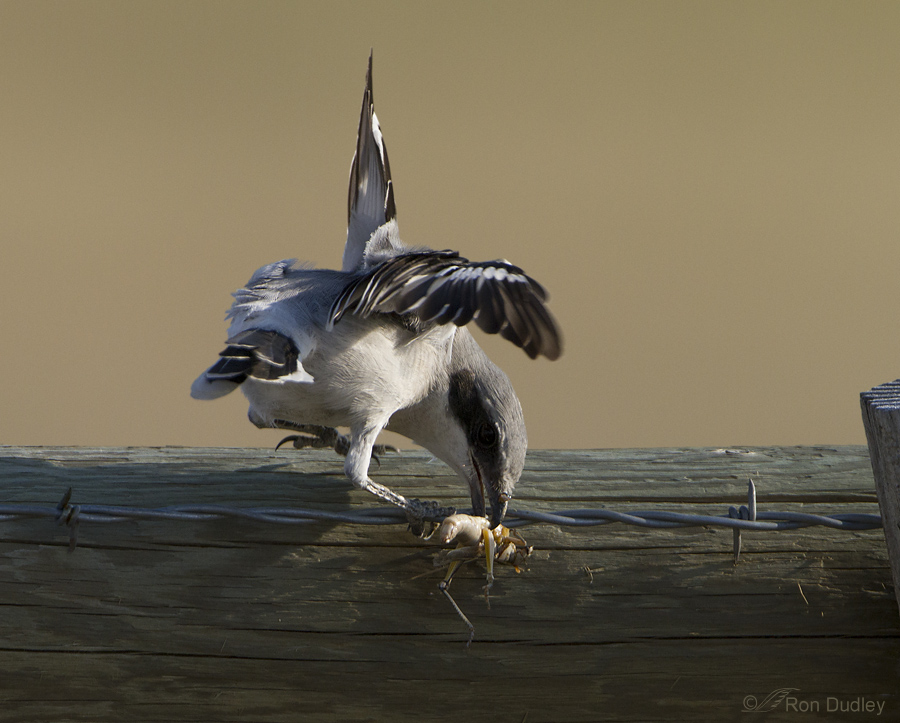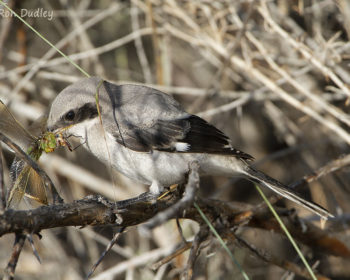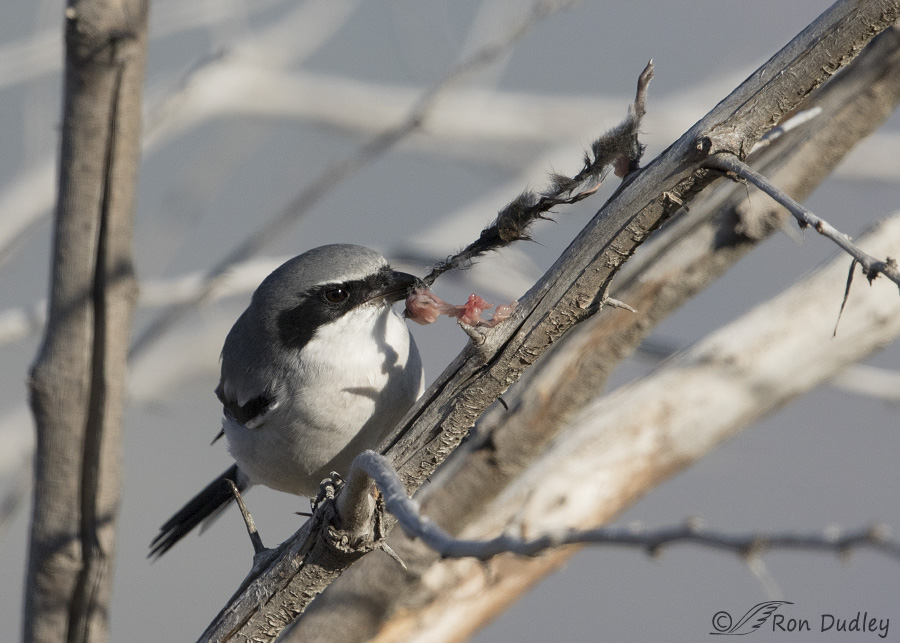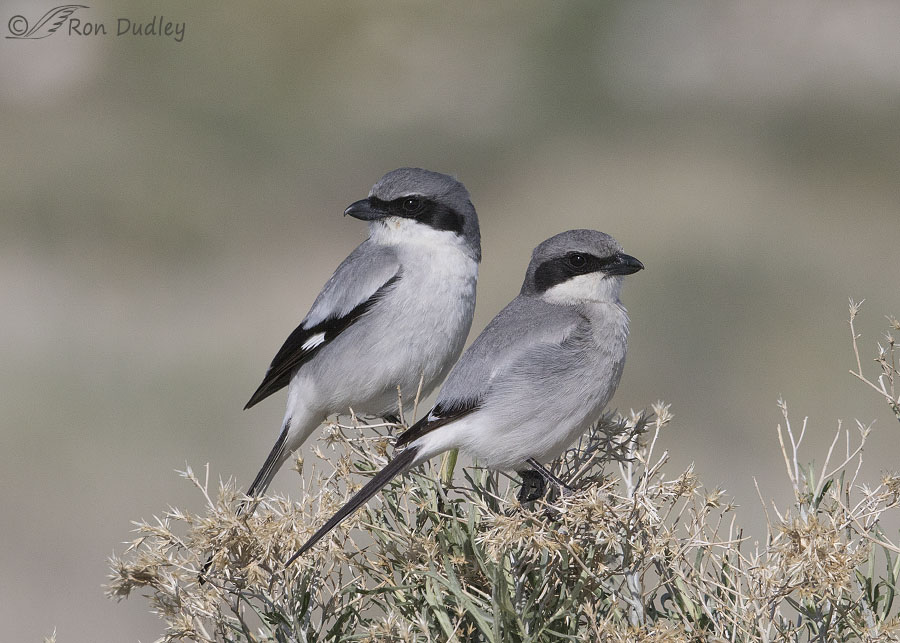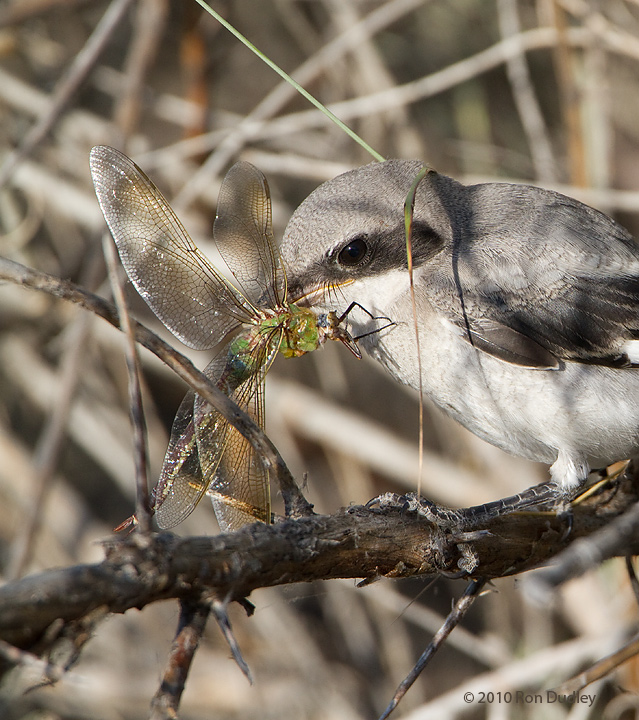Tag: butcher bird
Young Loggerhead Shrike Practicing His Prey-impaling Skills
Another Bump In The Road For Feathered Photography
Loggerhead Shrikes – Courtship Feeding Plus Two Flight Shots
Loggerhead Shrikes Impaling Prey
Loggerhead Shrike Devouring An Impaled Vole
Loggerhead Shrike – The Bill Of A Killer
I’ve never been able to get a really good look at both the hook and tomial teeth on the bill of a Loggerhead Shrike in any of my images. Until two days ago on Antelope Island…
Loggerhead Shrike Attempting To Impale A Grasshopper
Shrikes are well-known for impaling their prey on sharp projections like thorns or barbed wire as a means of food storage – they’re called “butcher birds” for good reason. I suspect the behavior to do so is innate but to become skilled at it takes practice. This past summer I found this Loggerhead Shrike on a fence on the Montana farm where I grew up. It had already captured the grasshopper when I arrived on the scene. First, my standard disclaimer for behavioral sequences. This bird was strongly sidelit so I seldom got a catch light and the light was harsh. To compensate, I did more processing with these images than I normally do because my intent is to show the behavior as well as possible, even though image quality suffered from the processing. Almost immediately I could see that the shrike was going to attempt to impale the grasshopper on the barb just below and in front of the beak of the bird. Impaling prey apparently isn’t an easy task. From all the contortions the bird went through… I’d assume that part of the problem was the awkward angle the shrike was at… to get proper leverage to complete the task. At one point the bird nearly fell off the fence. After a few moments the shrike gave up, turned its back on me with the grasshopper between its legs (and a gob of grasshopper on its bill) and seemed to contemplate what…
The Northern Shrike and the Good Samaritan
This blog post will be more about the experience I describe than about the shrike images. The Northern Shrike has been a nemesis bird for me for a long time. I have many good images of its southern cousin the Loggerhead Shrike but the northern is an uncommon winter visitor to the northern US and I’ve seldom seen one and never been close enough to the species for good, detailed images – until this week. And I very nearly didn’t get the shots. Northern Shrike This winter there has been a single (as far as I can tell) Northern Shrike wintering at the Great Salt Lake wetlands where I often shoot but I’ve never been able to get close enough to it for a quality shot. Two days ago I was finally able to approach the bird but it wouldn’t have happened without the kind actions of a good Samaritan. As I was driving down the dirt road I could see the shrike flitting from perch to perch in front of me. Several times I almost got close enough but then it would spook again. Finally, just as I got close and trained my big lens on the shrike, wouldn’t you know it – a car came up behind me on the narrow road. If it had passed it surely would have spooked the bird. But it didn’t. The driver could see my lens pointed out the window at the bird and simply stopped on the road, turned his engine off and waited respectfully for over 5 minutes as I photographed the shrike before it…
Loggerhead Shrikes Impaling Prey
Shrikes have been called “butcher birds” for their habit of impaling their prey (insects, small rodents, reptiles or birds) on thorns, barbed wire or other sharp projections. They do it for several reasons. It helps them to tear the flesh into bite sized pieces, they use it as a method of caching (storing) their food and it helps them to survive eating the toxic lubber grasshopper because the toxins within the insect degrade to harmless substances within a couple of days. I had never seen or photographed this behavior, or evidence of it, until this summer when I did both several times. In the first three photos below, this juvenile Loggerhead Shrike is practicing this instinctive behavior but the bird apparently isn’t very skilled at it yet as it had some difficulty impaling the dragonfly on the short thorn just below the insect. In the first image the bird seems to be trying to decide which of several thorns to use for this grisly task. Preparing to impale the dragonfly Impaling the dragonfly on a thorn The dragonfly has been impaled, though a little off-center. In this case the bird didn’t wait long to begin eating the prey. Here it has torn off the head and the front part of the abdomen with one pair of wings attached and is swallowing them. As you can see, the rest of the insect is still impaled on the thorn. Soon after this shot was taken the shrike removed the rest of the dragonfly from the thorn, flew with…


